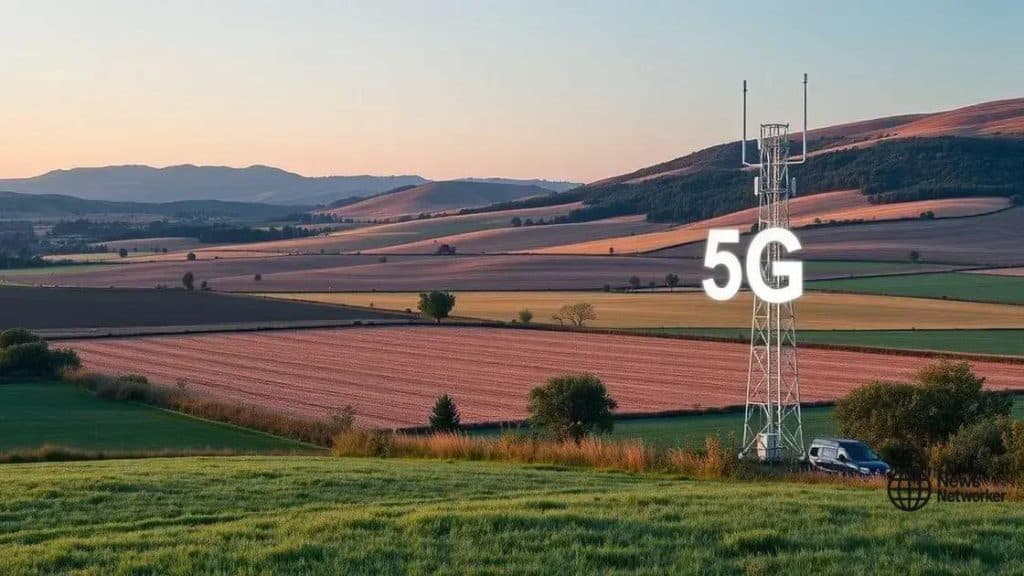The impact of 5G on rural connectivity and development

The impact of 5G on rural connectivity and development includes enhanced internet speeds, improved access to services like telehealth and education, and increased economic opportunities for local businesses.
The impact of 5G on rural connectivity is a game changer for communities long left behind. Have you ever wondered how faster internet might transform daily life in these areas? Let’s dive in.
Understanding 5G technology
Understanding 5G technology is essential to grasp its impact on rural areas. This next generation of wireless technology promises faster speeds and more reliable connections. But what does this mean for people living in remote locations?
5G networks operate on higher frequency bands, which allows them to transmit more data at once. Unlike previous generations, this technology can connect more devices simultaneously. This means better performance for everyone, especially in crowded environments.
Key Features of 5G
Here are some key features that set 5G technology apart:
- High Speed: Speeds can reach up to 10 Gbps, making it up to 100 times faster than 4G.
- Low Latency: Response times are drastically reduced, making tasks like video calls smoother.
- Increased Capacity: More devices can connect without slowing down the network.
- Enhanced Reliability: Fewer dropped connections lead to a more stable internet experience.
Imagine a farmer in a remote location using 5G to monitor crops through smart sensors. These devices can provide real-time data, improving yields and reducing waste. The impact of this technology goes beyond just personal use; it enhances business and agricultural practices.
Moreover, the deployment of 5G technology could bring essential services like telemedicine to rural communities. Doctors can consult patients remotely, providing much-needed care where traditional healthcare may be miles away. This technology could transform how rural areas access services and information.
With 5G, the potential for a more connected and efficient world becomes a reality. As the technology continues to develop and expand, it is vital to understand how it shapes connectivity and development.
Benefits of 5G in rural areas
Benefits of 5G in rural areas are significant, offering transformative advantages for individuals and communities. Imagine seamless internet access where before it was scarce. This technology is not just about faster speeds; it’s about unlocking potential.
One major benefit is improved connectivity. With 5G, rural residents can easily connect with the world. This opens doors for education, job opportunities, and access to information. In the past, students in remote locations faced challenges in accessing online resources. Now, they can participate in virtual classes without interruptions.
Key Advantages of 5G
Here are some of the key advantages of implementing 5G in rural regions:
- Enhanced Internet Speed: Speeds of up to 10 Gbps allow users to stream, download, and upload data quickly.
- Improved Access to Telehealth: Remote consultations with healthcare providers become feasible, ensuring better health outcomes.
- Support for Smart Farming: Farmers can use connected devices to monitor crops, manage irrigation, and reduce waste.
- Expanded Business Opportunities: Small businesses gain access to new markets through e-commerce and digital platforms.
Imagine a farmer using 5G technology to receive real-time weather updates. This information helps them make informed decisions about planting and harvesting. Such advancements not only increase efficiency but also enhance productivity and sustainability.
Additionally, 5G promotes social inclusion by connecting more people to essential services. For example, residents can engage with local government services more efficiently through online platforms, reducing the distance barrier. With higher speeds and greater support for devices, the digital divide in rural areas can begin to close.
Challenges in implementing 5G

Challenges in implementing 5G technology present significant hurdles that communities, especially in rural areas, must address. While the benefits are clear, the path to full implementation is complex.
One of the primary challenges is the cost of setting up the necessary infrastructure. Building new towers and upgrading existing ones can be expensive, and many rural areas do not have the financial resources to invest in this technology. This can lead to uneven coverage, where some regions benefit while others remain underserved.
Regulatory Hurdles
In addition to financial issues, navigating regulatory requirements can slow down progress. Each region may have different rules and procedures that companies must follow to deploy 5G. This inconsistency can make it difficult to create a unified strategy for rollout.
- Permitting Processes: Obtaining permits for new towers can be time-consuming.
- Environmental Concerns: Regulations to protect local wildlife or historical sites may delay installation.
- Community Engagement: Gaining local support is critical but can be challenging.
- Technology Standards: Ensuring compatibility with existing technology can complicate implementation.
The geographical landscape also poses unique challenges. In rural areas, diverse terrains can make it more difficult to deploy 5G networks. Remote locations may require advanced technology or innovative solutions to reach users effectively. Additionally, these areas often face lower population densities, which can make investing in 5G less profitable for companies.
Furthermore, there are ongoing concerns about data security and privacy. As more devices become connected through 5G, the risk of cyberattacks increases. Ensuring that the necessary security measures are in place is crucial, yet this adds another layer of complexity to implementation.
Real-world examples of 5G connectivity
Real-world examples of 5G connectivity showcase its potential to change lives and transform industries. Many regions around the world are already experiencing the benefits that come with this advanced technology.
One notable example comes from rural areas in the United States. In Nebraska, a farming community adopted 5G technology to enhance crop management. Farmers now use real-time data to monitor soil conditions and weather patterns. This leads to better decision-making and increased efficiency in farming practices.
Successful Implementations
Another impressive case is found in South Korea. The country has been a leader in deploying 5G networks. South Korean cities are using 5G for applications like:
- Smart Cities: Enhanced traffic management and public safety through connected devices.
- Telemedicine: Patients can have high-quality consultations without needing to visit clinics.
- Remote Education: Students can access high-speed internet for online learning, improving educational opportunities.
In Europe, the city of Tallinn in Estonia has integrated 5G into its public transportation system. Passengers can receive real-time updates on bus schedules and routes directly to their phones. This leads to a smoother travel experience and reduces waiting times.
Additionally, in China, cities like Shanghai are leveraging 5G technology to support smart manufacturing. Factories are now connected, allowing for more automation and efficiency. Machines communicate with each other, leading to reduced downtime and increased productivity.
The potential for 5G connectivity extends far beyond just personal use. These examples illustrate how communities and industries can harness this technology to improve quality of life and operational efficiencies. As 5G continues to expand, we can expect to see even more innovative applications that will change the way we live and work.
Future prospects for rural development with 5G
Future prospects for rural development with 5G are promising, as this technology could reshape the landscape of rural communities. With improved internet speeds and connectivity, many opportunities could arise for growth and development.
As 5G technology becomes more widely available, it can drive innovation in various sectors. For instance, remote education will become more accessible. Students living in rural areas can participate in online classes and access a wealth of resources. This will help bridge the education gap and enable more students to succeed.
Enhancing Economic Growth
In addition to education, 5G has the potential to stimulate economic growth. Businesses in rural regions can thrive by utilizing digital tools. Improved connectivity enables small businesses to reach new customers through e-commerce platforms. This could lead to increased revenue and job creation.
- Smart Agriculture: Farmers will adopt advanced technologies, such as drones and IoT devices, to optimize crop management.
- Telehealth Services: Access to healthcare will increase, allowing residents to consult doctors without traveling long distances.
- Tourism Development: Enhanced connectivity can promote local tourism by providing better access to information and online bookings.
- Remote Work Opportunities: More residents may find opportunities to work for companies located far from their communities.
Furthermore, 5G can support smart city initiatives in rural areas. Local governments can implement better traffic management, waste management, and public safety measures through connected networks. As these projects develop, residents will enjoy improved services and quality of life.
As we look toward the future, it is essential for policymakers and communities to embrace 5G technology. Investing in infrastructure and promoting awareness will be key to unlocking its full potential for rural development. The collaboration between public and private sectors can pave the way for a brighter future, enhancing the lives of those living in rural areas.
FAQ – Frequently Asked Questions about 5G Impact on Rural Connectivity
What are the main benefits of 5G technology in rural areas?
5G technology improves internet speed and reliability, enhances access to online education, and supports telehealth services.
How does 5G support economic growth in rural communities?
It enables local businesses to reach new markets through e-commerce and allows for better technological tools, increasing revenue and job opportunities.
What challenges do rural areas face in implementing 5G?
Challenges include high infrastructure costs, regulatory hurdles, and geographical obstacles that can complicate deployment.
What real-world examples show the impact of 5G in rural areas?
Examples include smart agriculture innovations in Nebraska, telemedicine in South Korea, and enhanced public transportation in Tallinn, Estonia.





